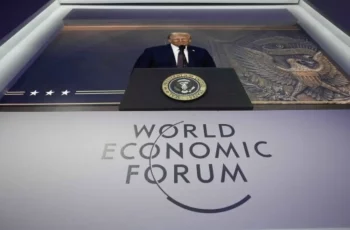President Trump’s decision to launch attacks on three of Iran’s major nuclear enrichment sites took place after negotiations in Geneva collapsed. Iran’s foreign minister met with the foreign ministers of Germany, Britain, France, known as the E3, plus the EU. The E-3 and EU group pressed the Iranians to engage in negotiations with the United States. Iran’s foreign minister, Abbas Araghchi said Iran would only consider talks of some kind (not with the United States) after Israel halted its attacks on Iran and was punished. The E-3 tried to sell Araghchi and the Iranians on a formula, not supported by Washington, that would impose strict nuclear inspections and other similar measures as a “solution” to the impasse, disregarding President Trump’s policy of no enrichment of uranium by Iran. Araghchi wasn’t buying the European suggestions.

Behind the scenes there were a number of attempts to broker deals, the Geneva meeting the last in a line of contacts. All the various initiatives were blocked by “Supreme leader” Ayatollah Khamenei.
The US attack on Iran’s nuclear facilities featured some 75 precision weapons including 14 GBU-57 bunker busters, a 30,000 pound dual warhead weapon dropped by B-2 stealth bombers. Twelve GBUs were used against Fordow, two on the nuclear site at Isfahan. The B-2’s flew directly from the United States and were refueled several times enroute to their targets. The US also deployed fourth and fifth generation fighter jets, likely from Prince Sultan Airbase in Saudi Arabia, although that is unconfirmed. A US submarine, probably Ohio class, located some 400 miles from Iran, launched 30 TLAM (Tomahawk Land Attack) cruise missiles aimed at Natanz and Isfahan. Other targets may also have been involved, but that information has not been disclosed.

The US aircraft were not attacked by any Iranian air defenses, suggesting that most of these had previously been neutralized by Israel’s Air Force.

China deployed two surveillance ships, number 855 and 815A, apparently to provide early warning to Iran and to try and jam Israeli air attacks. These same ships, it appears, were unsuccessful in detecting the US attack, either because they were jammed, or they never saw the B-2 bombers and other stealth aircraft such as the F-22 or F-35. Even if the Chinese were able to pass warnings to Iran, Israel had already destroyed most of Iran’s air force and other air defenses. China also, reportedly, was shipping supplies into Iran and evacuating Chinese citizens.

The US operation, called Midnight Hammer, was coordinated with Israel and managed by CENTCOM. President Trump, speaking a few minutes after 10PM (EDT) from the White House said that Iran should now make peace, but if it did not, there were plenty of targets in Iran that were far easier than Fordow, Isfahan or Natanz.
Secretary of Defense Pete Hegseth, speaking at an early Sunday morning news conference at the Pentagon said “I can only confirm that there are both public and private messages being directly delivered to the Iranians in multiple channels, giving them every opportunity to come to the table. They understand precisely what the American position is, precisely what steps they can take to allow for peace, and we hope they do so.” Reportedly Iran’s foreign minister is traveling to Moscow to coordinate with Russia and Russian President Vladimir Putin. Putin had sought a mediation role between Iran and the United States. For Putin the main focus is on Ukraine where Russia is making significant breakthroughs, especially in areas that apparently are outside of the stated territorial goals of Russia’s Special Military Operation. Russian support for Iran, if Russia actively challenged the United States, could force a turnaround in how the US views Russia in strategic terms. Putin likely will not want to see any change that would induce the United States to commit airpower to defend Ukraine and, by extension, risk a wider European conflict. Therefore, it is unlikely that Russia will take any action that would undermine the “warming trend” with the United States. Russia’s ability to influence Khamenei and the Mullahs, or for that matter Iran’s Revolutionary Guards, to make a deal with the United States, is highly limited.
At present the chance for Iran to change course and to consider a diplomatic solution that would definitively end Iran’s nuclear program seems unlikely, considering Iran’s current power structure. The US insists it is not promoting regime change in Iran, but that policy could very well change if there continues to be no progress in resolving the nuclear issue. Reportedly President Trump’s envoy, Richard Grenell has asked Elon Musk to provide Starlink terminals to “our friends” in Iran, a strong hint that the US is getting ready to support efforts to overthrow the Khamenei regime.
Meanwhile hard liners in Iran are calling for Iran’s navy to block the Straits of Hormuz, effectively ending oil exports through the Persian Gulf. Iran has a small navy and some submarines, including fairly quiet but older Kilo-class submarines. Whether Iran could stop commercial traffic under current circumstances, may be wishful thinking, considering the naval and air power put in place by the United States. Similarly, there is a Houthi threat to stop commercial traffic in the Red Sea, but Houthi capabilities have already been reduced and Iran is no longer in a position to resupply the Houthis with missiles and drones.

Meanwhile the Iranian government has lost face at home. Suppressing the Internet and other steps won’t stop the flow of information outside of regime control. The possibility of an internal upheaval cannot be discounted. Whether it will materialize remains to be seen.
Source: author’s blog










Comments